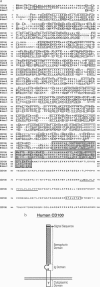Abstract
Herein we describe the molecular characterization of the human leukocyte activation antigen CD100 and identify it as the first semaphorin, to our knowledge, in the immune system. Semaphorins have recently been described as neuronal chemorepellants that direct pioneering neurons during nervous system development. In this study we demonstrate that CD100 induces B cells to aggregate and improves their viability in vitro. We show that CD100 modifies CD40-CD40L B-cell signaling by augmenting B-cell aggregation and survival and down-regulating CD23 expression. Thus, these results suggest that semaphorins as exemplified by CD100 also play a functional role in the immune system.
Full text
PDF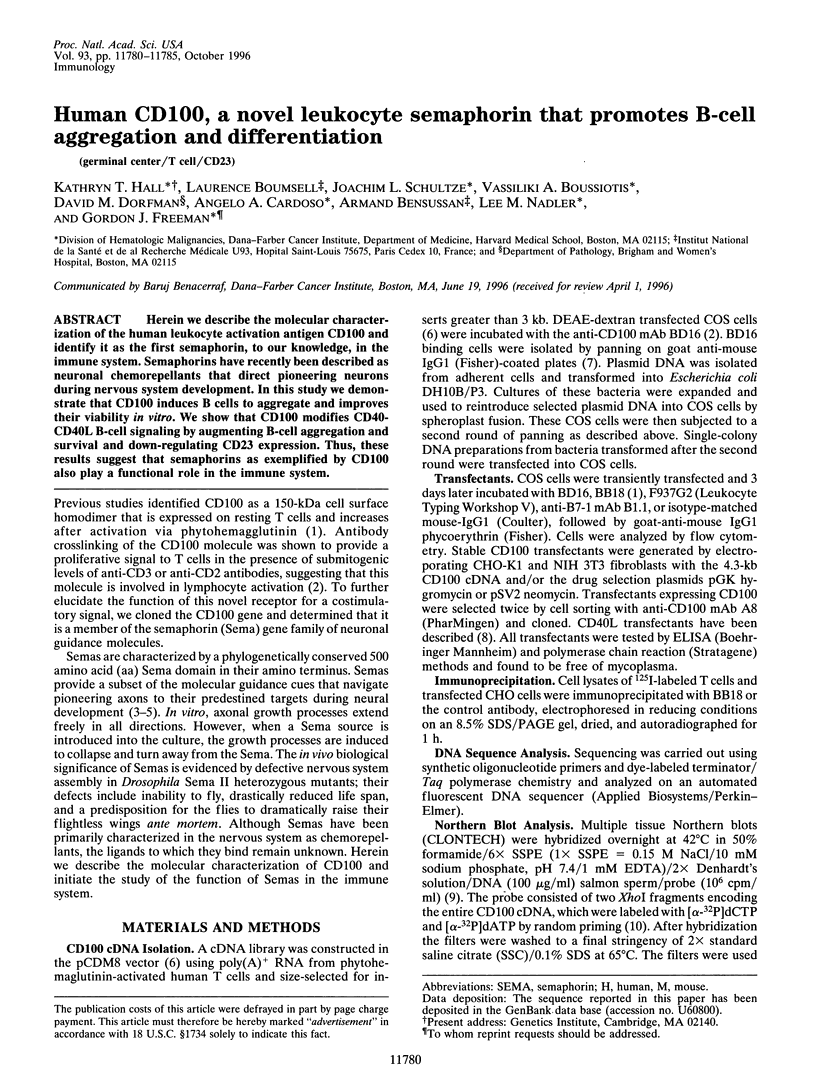

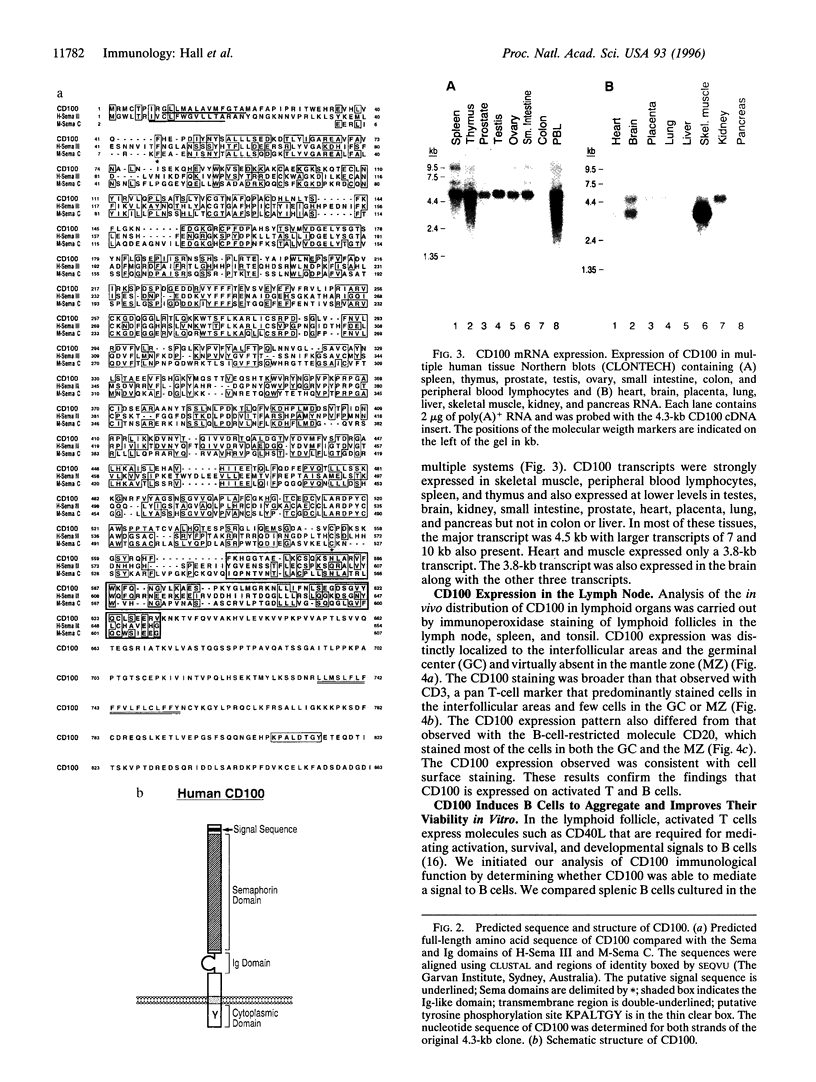
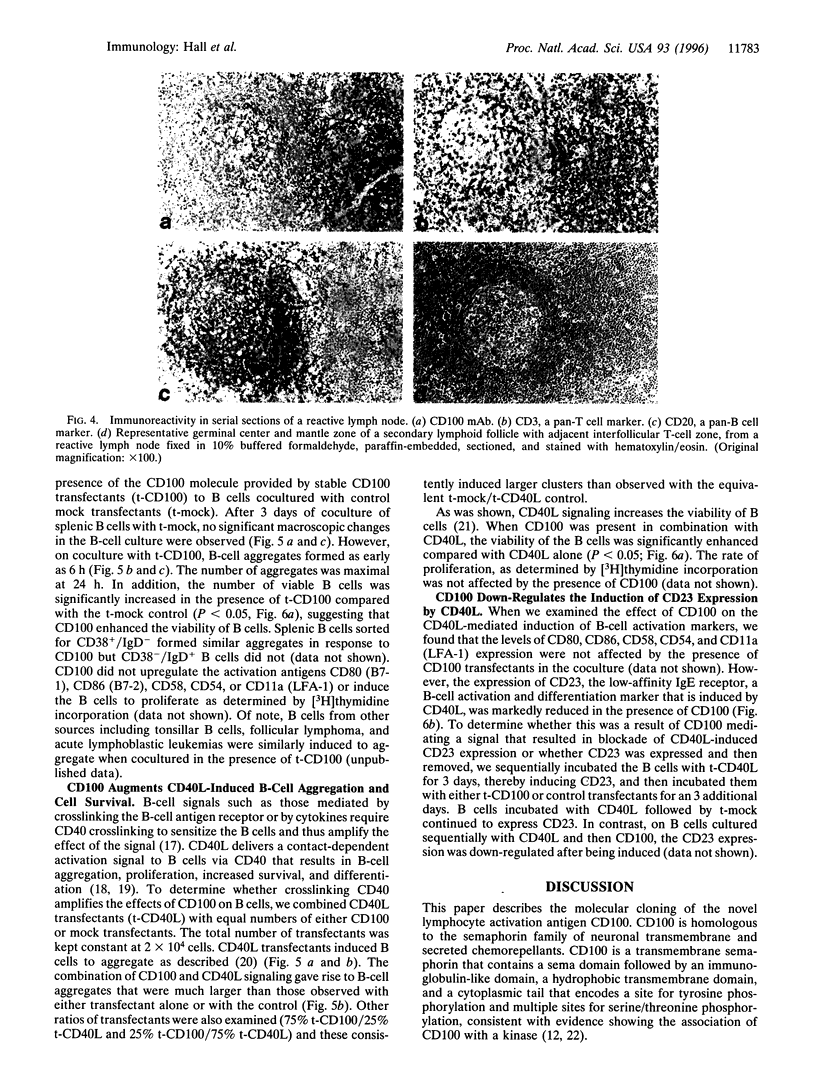

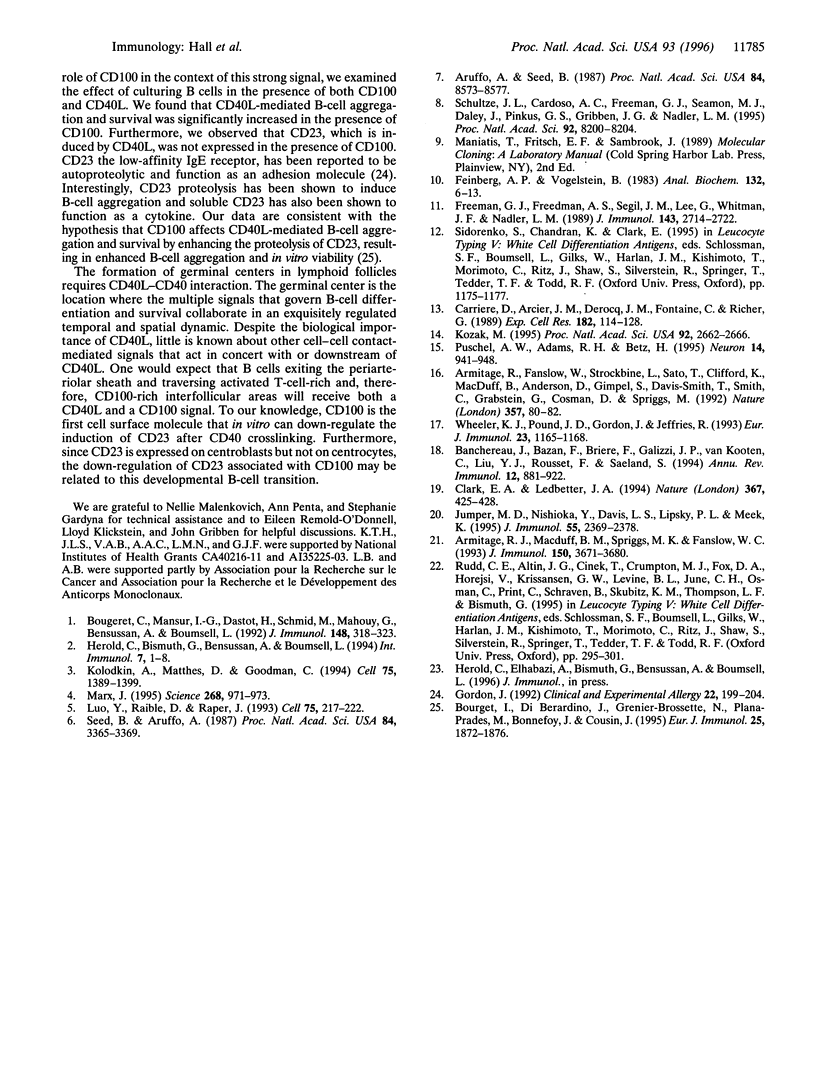
Images in this article
Selected References
These references are in PubMed. This may not be the complete list of references from this article.
- Armitage R. J., Fanslow W. C., Strockbine L., Sato T. A., Clifford K. N., Macduff B. M., Anderson D. M., Gimpel S. D., Davis-Smith T., Maliszewski C. R. Molecular and biological characterization of a murine ligand for CD40. Nature. 1992 May 7;357(6373):80–82. doi: 10.1038/357080a0. [DOI] [PubMed] [Google Scholar]
- Armitage R. J., Macduff B. M., Spriggs M. K., Fanslow W. C. Human B cell proliferation and Ig secretion induced by recombinant CD40 ligand are modulated by soluble cytokines. J Immunol. 1993 May 1;150(9):3671–3680. [PubMed] [Google Scholar]
- Aruffo A., Seed B. Molecular cloning of a CD28 cDNA by a high-efficiency COS cell expression system. Proc Natl Acad Sci U S A. 1987 Dec;84(23):8573–8577. doi: 10.1073/pnas.84.23.8573. [DOI] [PMC free article] [PubMed] [Google Scholar]
- Banchereau J., Bazan F., Blanchard D., Brière F., Galizzi J. P., van Kooten C., Liu Y. J., Rousset F., Saeland S. The CD40 antigen and its ligand. Annu Rev Immunol. 1994;12:881–922. doi: 10.1146/annurev.iy.12.040194.004313. [DOI] [PubMed] [Google Scholar]
- Bougeret C., Mansur I. G., Dastot H., Schmid M., Mahouy G., Bensussan A., Boumsell L. Increased surface expression of a newly identified 150-kDa dimer early after human T lymphocyte activation. J Immunol. 1992 Jan 15;148(2):318–323. [PubMed] [Google Scholar]
- Bourget I., Di Berardino W., Breittmayer J. P., Grenier-Brossette N., Plana-Prades M., Bonnefoy J. Y., Cousin J. L. CD20 monoclonal antibodies decrease interleukin-4-stimulated expression of the low-affinity receptor for IgE (Fc epsilon RII/CD23) in human B cells by increasing the extent of its cleavage. Eur J Immunol. 1995 Jul;25(7):1872–1876. doi: 10.1002/eji.1830250712. [DOI] [PubMed] [Google Scholar]
- Carriere D., Arcier J. M., Derocq J. M., Fontaine C., Richer G. Antigenic modulation induced by four monoclonal antibodies adsorbed on gold particles (specificity anti-CD4, anti-CD5, anti-CD7, and anti-150-kDa antigen): relationship between modulation and cytotoxic activity of immunotoxins. Exp Cell Res. 1989 May;182(1):114–128. doi: 10.1016/0014-4827(89)90284-x. [DOI] [PubMed] [Google Scholar]
- Clark E. A., Ledbetter J. A. How B and T cells talk to each other. Nature. 1994 Feb 3;367(6462):425–428. doi: 10.1038/367425a0. [DOI] [PubMed] [Google Scholar]
- Feinberg A. P., Vogelstein B. A technique for radiolabeling DNA restriction endonuclease fragments to high specific activity. Anal Biochem. 1983 Jul 1;132(1):6–13. doi: 10.1016/0003-2697(83)90418-9. [DOI] [PubMed] [Google Scholar]
- Freeman G. J., Freedman A. S., Segil J. M., Lee G., Whitman J. F., Nadler L. M. B7, a new member of the Ig superfamily with unique expression on activated and neoplastic B cells. J Immunol. 1989 Oct 15;143(8):2714–2722. [PubMed] [Google Scholar]
- Gordon J. CD23 and B cell activation. Clin Exp Allergy. 1992 Feb;22(2):199–204. doi: 10.1111/j.1365-2222.1992.tb03073.x. [DOI] [PubMed] [Google Scholar]
- Hérold C., Bismuth G., Bensussan A., Boumsell L. Activation signals are delivered through two distinct epitopes of CD100, a unique 150 kDa human lymphocyte surface structure previously defined by BB18 mAb. Int Immunol. 1995 Jan;7(1):1–8. doi: 10.1093/intimm/7.1.1. [DOI] [PubMed] [Google Scholar]
- Jumper M. D., Nishioka Y., Davis L. S., Lipsky P. E., Meek K. Regulation of human B cell function by recombinant CD40 ligand and other TNF-related ligands. J Immunol. 1995 Sep 1;155(5):2369–2378. [PubMed] [Google Scholar]
- Kolodkin A. L., Matthes D. J., Goodman C. S. The semaphorin genes encode a family of transmembrane and secreted growth cone guidance molecules. Cell. 1993 Dec 31;75(7):1389–1399. doi: 10.1016/0092-8674(93)90625-z. [DOI] [PubMed] [Google Scholar]
- Kozak M. Adherence to the first-AUG rule when a second AUG codon follows closely upon the first. Proc Natl Acad Sci U S A. 1995 Mar 28;92(7):2662–2666. doi: 10.1073/pnas.92.7.2662. [DOI] [PMC free article] [PubMed] [Google Scholar]
- Luo Y., Raible D., Raper J. A. Collapsin: a protein in brain that induces the collapse and paralysis of neuronal growth cones. Cell. 1993 Oct 22;75(2):217–227. doi: 10.1016/0092-8674(93)80064-l. [DOI] [PubMed] [Google Scholar]
- Marx J. Helping neurons find their way. Science. 1995 May 19;268(5213):971–973. doi: 10.1126/science.7754391. [DOI] [PubMed] [Google Scholar]
- Püschel A. W., Adams R. H., Betz H. Murine semaphorin D/collapsin is a member of a diverse gene family and creates domains inhibitory for axonal extension. Neuron. 1995 May;14(5):941–948. doi: 10.1016/0896-6273(95)90332-1. [DOI] [PubMed] [Google Scholar]
- Schultze J. L., Cardoso A. A., Freeman G. J., Seamon M. J., Daley J., Pinkus G. S., Gribben J. G., Nadler L. M. Follicular lymphomas can be induced to present alloantigen efficiently: a conceptual model to improve their tumor immunogenicity. Proc Natl Acad Sci U S A. 1995 Aug 29;92(18):8200–8204. doi: 10.1073/pnas.92.18.8200. [DOI] [PMC free article] [PubMed] [Google Scholar]
- Seed B., Aruffo A. Molecular cloning of the CD2 antigen, the T-cell erythrocyte receptor, by a rapid immunoselection procedure. Proc Natl Acad Sci U S A. 1987 May;84(10):3365–3369. doi: 10.1073/pnas.84.10.3365. [DOI] [PMC free article] [PubMed] [Google Scholar]
- Wheeler K., Pound J. D., Gordon J., Jefferis R. Engagement of CD40 lowers the threshold for activation of resting B cells via antigen receptor. Eur J Immunol. 1993 May;23(5):1165–1168. doi: 10.1002/eji.1830230528. [DOI] [PubMed] [Google Scholar]




